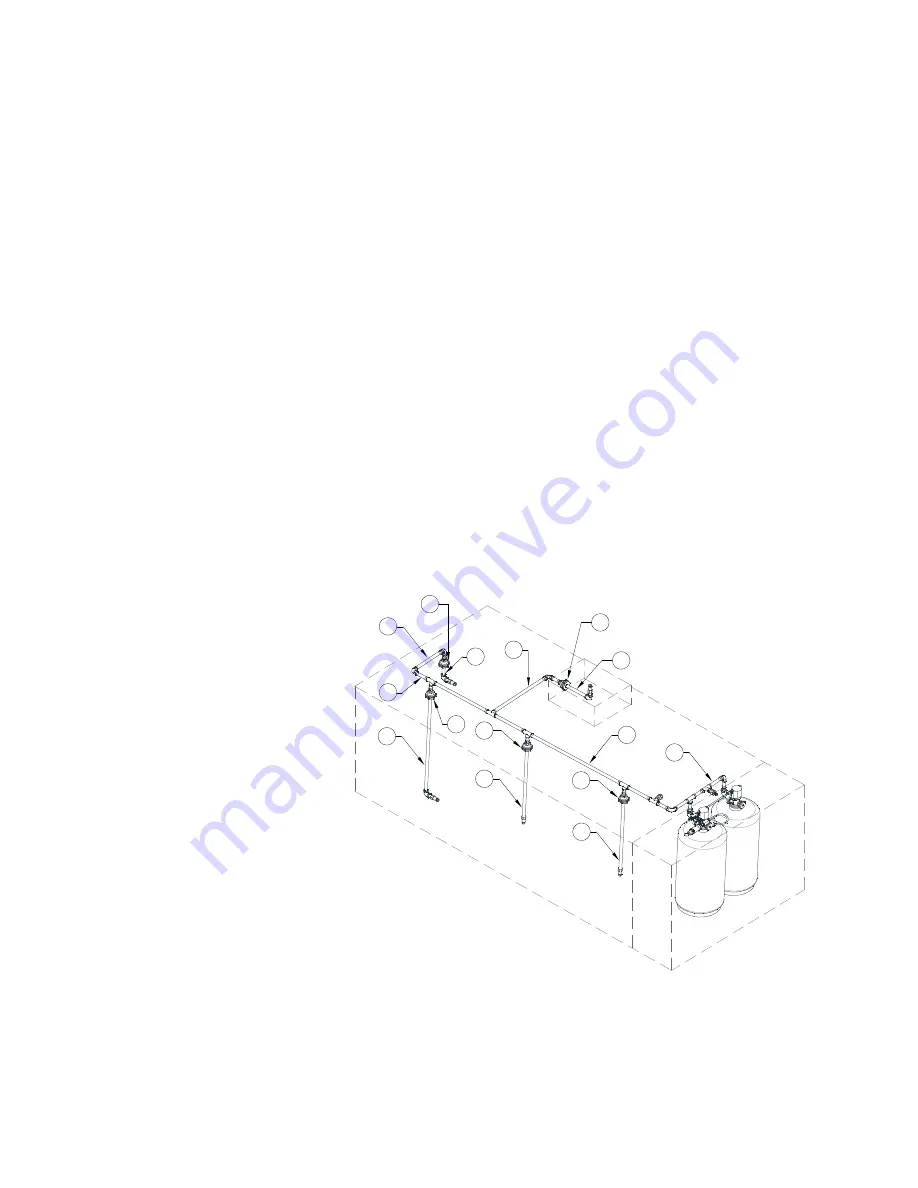
34
Agent Distribution Piping
The agent distribution piping shall be 3/8” NPT Schedule 40 black iron, chrome-plated or stainless-steel
pipe and fittings. Fittings shall be minimum class 150. The pipe for the nozzle drops cannot be sleeved in
steel but can be made from polished stainless steel, or polished chrome-plated black iron.
Galvanize pipe or fittings must not be used. Pipe thread or compound shall not be used.
Distribution piping can be run in single cylinder or dual cylinder, manifold configurations. Refer to
for single cylinder configuration details. Refer to
for dual cylinder configuration details.
The distribution network consists of a supply line and all applicable branches depending on the protected
hazards. Branch lines include the plenum branch, duct branch, overlapping nozzle appliance branch (TF1
nozzle), and dedicated nozzle appliance branch (ADP).
The supply line is defined as the run of all pipe and fittings from the tank outlet to the last branch line,
including fittings at the start of all branch lines. All branch lines start at the outlet of the applicable supply
line fitting and do not include the supply tee.
A plenum branch is defined as the run of all pipe and fittings from the supply line tee outlet to the plenum
nozzle(s).
A duct branch is defined as the run of all pipe and fittings from the supply line tee outlet to the duct
nozzle(s).
An overlapping nozzle appliance branch is defined as the run of all pipe and fittings from the supply line tee
outlet to the TF1 nozzle.
A dedicated nozzle appliance branch is defined as the run of all pipe and fittings from the supply line tee
outlet to the ADP nozzle.
Figure 34 - Distribution Piping
1
3
3
2
2
1
2
5
4
4
3
3
6
6
3
1. Duct Branch Line
2. Supply Piping
3. Hood Penetrations
4. Overlapping Branch Line
5. Dedicated Appliance Branch
Line
6. Plenum Branch Line
Summary of Contents for EWC
Page 2: ...2 ...































